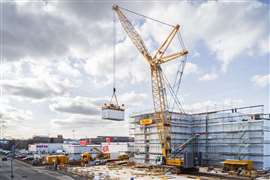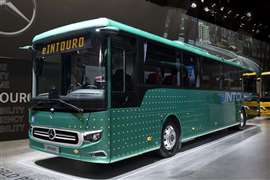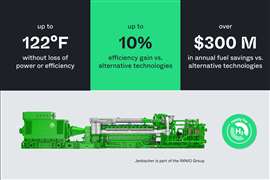Siemens, Mitsubishi Electric join forces on research
08 June 2021
Clean-air insulation technology sought
Siemens Energy and Mitsubishi Electric are exploring the joint development of high-voltage switching solutions that substitute greenhouse gases with clean air for insulation.
Under the Memorandum of Understanding (MoU), both companies will research methods for scaling up the application of clean-air insulation technology to higher voltages. They’ll start with a 245-kV dead-tank circuit breaker that will speed up the availability of climate-neutral high-voltage switching solutions for customers around the globe. Both partners will continue to manufacture, sell, and service switchgear solutions independently.
The companies said that in most of the world’s substations, sulfur hexafluoride (SF6) – the most potent greenhouse gas in the world, with a potential for global warming roughly 23 500 times greater than CO2, – is still the insulating gas of choice. Even with a very low number of leakages, the impact on global warming is significant, the companies said. In light of the drive toward global decarbonization, the demand for alternatives is growing as operators seek future-proof technologies that significantly reduce the carbon footprint of their systems. At the same time, regulations to reduce or prohibit the use of fluorinated gases in the electrical industry are being reviewed and implemented in various parts of the world.
Siemens Energy and Mitsubishi Electric are pioneers in the development of high-voltage switching solutions. Both companies have been working on the development of SF6-free gas-insulated switching solutions that replace the greenhouse gas with clean air, a pure mixture of nitrogen and oxygen, in order to contribute to global carbon-neutrality goals. To date, clean-air insulation is the only alternative to greenhouse gases and therefore poses zero health and safety risks. In conjunction with vacuum interrupters, a higher performance for switching applications is ensured, even compared with all known SF6 circuit breakers.
 Siemens Energy and Mitsubishi Electric sign MoU to move faster to develop gas solutions with zero global-warming potential in the high-voltage power transmission industry.
Siemens Energy and Mitsubishi Electric sign MoU to move faster to develop gas solutions with zero global-warming potential in the high-voltage power transmission industry.
Siemens Energy’s Blue Portfolio offers future-proof and environmentally friendly solutions for high-voltage power transmission. It comprises F-gas-free gas-insulated switchgear, circuit breakers, and instrument transformers. The combination of vacuum-switching technology and clean-air insulation enables a significant reduction of emissions without any impact on the lifetime of the products. While circuit breakers that use clean-air and vacuum-switching technology have been available for at least 15 years for voltage levels up to 72.5 kV, the outstanding technical performance and low lifecycle costs also make it a perfect choice for other substation products, including gas-insulated switchgear up to 145 kV, with absolutely zero CO2 equivalent emissions over the lifetime of the equipment. Siemens Energy’s Blue products lie outside the scope of any conceivable F-gas regulation.
Mitsubishi Electric provides a variety of high- and medium-voltage products to ensure the safe and reliable operation of modern power networks. With its state-of-the-art, best in the industry vacuum-interruption and dry-air insulation technology, Mitsubishi Electric is contributing to society by providing (SF6-free) and zero CO2 equivalent emission, energy-efficient, and low lifecycle-cost solutions. Mitsubishi Electric has manufactured high-quality vacuum tubes and products since 1965 and started providing its 72.5-kV vacuum interrupter in 2002. The company is extending its vast experience with vacuum and dry-air technology to create a new lineup of higher-voltage circuit breaker and switchgear products.
POWER SOURCING GUIDE
The trusted reference and buyer’s guide for 83 years
The original “desktop search engine,” guiding nearly 10,000 users in more than 90 countries it is the primary reference for specifications and details on all the components that go into engine systems.
Visit Now
STAY CONNECTED




Receive the information you need when you need it through our world-leading magazines, newsletters and daily briefings.
CONNECT WITH THE TEAM













